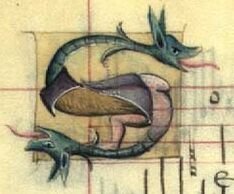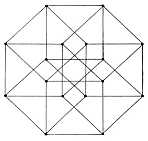Click here if you are having trouble with the PDF files.
Click here if you are having trouble with the handwritten files.

Problems?
Click here if you are having trouble
with the PDF files.
Click here if you are having trouble
with the handwritten files.

Assignments
Assignment 00 (PDF Format) (PS format)
Assignment 0 (PDF Format) (PS format)
Assignment 1 (PDF Format) (PS format)
Assignment 2 (PDF Format) (PS format)
Assignment 3 (PDF Format) (PS format)
Assignment 3 1/2 (PDF Format) (PS format)
Assignment 4 (PDF Format) (PS format)
Assignment 4
1/2
(PDF Format)
(PS format)
Answers
Assignment 5 (PDF Format) (PS format)
Review: Notes on topics from Cal II
A recommendation from Ivo:
here's
a quite nice, free, graphing web app
that you can use to plot polar and parametric graphs (and even, with a
bit of experimentation, 3D graphs). Try it out (a tip: try their
examples, and just alter the equations and parameters to get other
graphs you want; experiment to your heart's - or should that be
"cardioid's"? - content!).
Desmos.com
Features page
Polar graphs
Parametric graphs
Some
curves in polar coordinates.
Some standard curves and the equations that generate them.
Polar Graph paper (6
graphs per page)
Maple worksheet: Introduction
to polar coordinates.
On my Links
page, I give some links to sites with Maple tutorials and
exercises in Cal I, II, III - here is a sample
of a Maple file you can open in Maple and experiment on, taken from
that site. (Don't try to read this in your browser! Right click,
save link/target as ..., and then open the file with Maple.)
Please don't print this out at the college - the idea is for you
to read and experiment with this file in Maple, not to print it and read it
off-screen. It's long enough for lab technicians to worry about the cost of
printing!
If you want a copy of this tutorial: Here is a PDF printout of the text and graphs - you might find it good reading, and the graphs are very pretty! (This you can print out!! Though there are some errors, as explained at the start of the document, in the printed version. Eg, Limaçon is missing its ç!)
Summary notes on vector geometry (by Denis Sevee)
![Evolute of the ellipse [Image: Evolute of the ellipse]](CAM.021/envelopes.gif) Quadric
surfaces.
Some standard surfaces and the equations that generate them.
Quadric
surfaces.
Some standard surfaces and the equations that generate them.
The quadrics discussed in class: (New: Images updated in March 2015)
Some worksheets exploring extra topics
(Some of these have been possible CAM assignments in some years)
Aspects of Pi (PDF format)
(Uses Chp 8, Stewart, Essential Calculus)
Calculating ζ(2) several ways
(A variant of "Aspects of Pi" - Uses Chp 8 and 12)
Some properties of the (inverted) cycloid
(PDF format)
(Uses Chp 9)
Video showing a
cycloid is a tautochrone (Slow Motion)
[Regular speed version]
[AVI version] (These are
larger files than the slowmo version; you might want to download
them to your computer ("left click ...") and view them off-line.)
Do curve balls really curve? (PDF format)
(Uses Chp 10)
Envelopes (PDF format)
(Uses Chp 11)
The 2nd derivative test
and the chain rule (Assignment 4 1/2) (PDF Format)
(PS format)
(Uses Chp 11)
The
Tower of Babel and other stories
(Uses Chps 10-12)
And more:
Bill
Boshuck's notes on derivatives of multivariable functions
(Chp 11)
Off-campus notes:
Paul's Online Math Notes
(Notes for Cal I, Cal II and Cal III - but note that his courses are
not exactly the same as ours, so some topics may be missing, extra, or
located in another course)

FLATLAND - A Romance of many dimensions
A novel dealing with the question of whether the fourth dimension can exist, and
how we might seek to perceive it (based on the analogy of a 2D being trying
to imagine a 3D world). Lots of fun, even if it was written long ago.
If you want this in ebook
format, try this (epub);
other formats
here.
Another helpful
page in visualizing 4D
[This Union College teacher's Home
Page has a lot of good stuff on it. Including tips for studying, mathematical
art, movies for maths (including one on hyperboloids, as well as the 4D stuff),
geometry and web math projects, and advice for life.]
![[Flatland: A romance of many dimensions]](Flatland/TitlePag.gif)